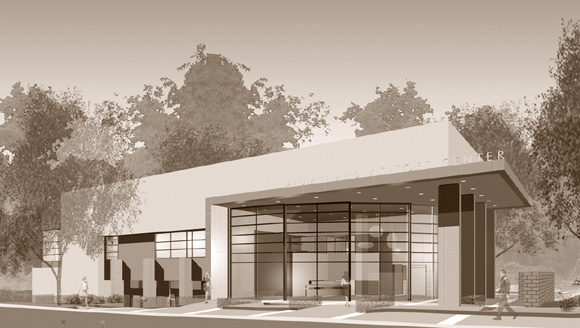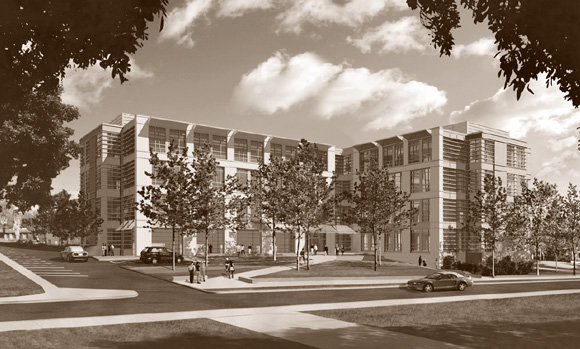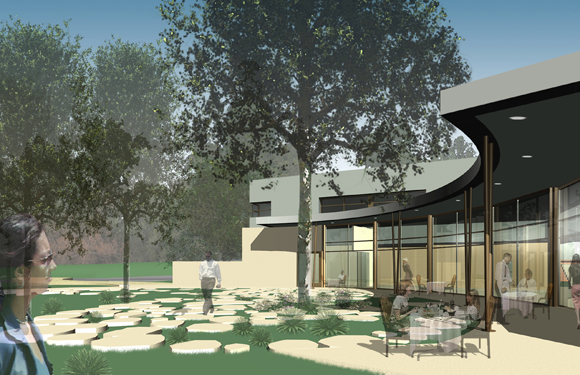
Two hot topics among the Design and Construction Services staff at UC Riverside these days are sustainability (on the positive side) and the recent, extraordinary rate of inflation of building costs (on the negative). arcCA spoke with Darius Maroufkhani, a Senior Project Manager for the university, about these issues.
Assuring Sustainability
The University of California Board of Regents has mandated that all new construction on UC campuses be at least LEED-equivalent—that is, that they be certifiable by the U.S. Green Building Council’s LEED sustainability standards, even if the campus doesn’t choose to invest in the certification process itself. UC Riverside has embraced equivalency and is looking at certification. Toward the latter end, they have established a baseline of campus-wide credits that can be applied toward any new building project on the campus.
Most discussions of sustainability focus on design decisions involving siting, orientation, and materials and systems selection. But, as Maroufkhani points out, there is a less-talked-about component of sustainable building required by the LEED standards: commissioning. Fundamental commissioning of a building’s energy systems is a requirement for LEED certification, with the intent to “Verify that the building’s energy related systems are installed, calibrated, and perform according to the owner’s project requirements, basis of design, and construction documents.” In addition to assuring that the building’s energy systems perform as intended, Maroufkhani notes that commissioning reduces long-term costs by insuring proper use and promoting effective maintenance of systems. Doing so is more and more important as campus infrastructure and systems become more complex.
The commissioning process can cost from $40,000 for a five-million-dollar building to four times that amount for a thirty-million-dollar building. UC Riverside now has fourteen building projects in design or construction—including a new building for the College of Humanities, Arts, and Social Sciences, by Leo A. Daly with Pei Cobb Freed; a new Psychology Building by HDR with Shipley Bulfinch Richardson Abbott; and an addition to the University Commons by Hardy Holzman Pfeifer—and the questions for the university are, “How many buildings can we afford to commission?” and, “For which projects will commissioning yield the greatest benefits?”

Inflation of Cost and Time
Paying for the implementation of building commissioning and the process of LEED certification has been made more difficult by the hyperinflation of construction costs over the last three years. The change in these three years has been dramatic, with prices for many materials doubling or tripling. By contrast, in the previous fifteen years, many UC Riverside projects came in under budget.
The rapid escalation of prices makes cost estimation difficult. Frequently, the architect’s estimator and the university’s independent estimator will agree on an estimate, yet both will prove to have under-estimated by 10 to 25 percent.
Time is a factor in cost escalation, and several elements of the approval system for university projects slow down the process. Schematic design takes a long time, because, once approved by the campus community and design review board, it requires two to three months to gain approval from the Office of the President and the Board of Regents. Fortunately, the CEQA approval process runs in parallel with schematic design approvals.

UC Riverside, like most of the UC campuses, has its own, in-house Deputy State Fire Marshall, which facilitates things considerably. But approval is also required from the Division of the State Architect, although only for accessibility requirements, and these approvals typically take from six to twelve weeks.
According to Maroufkhani, however, the most significant factor affecting cost today is a dearth of subcontractors in a very busy construction industry. While selection of a general contractor for a UC project requires competitive bidding, the university sometimes sees a single electrical subcontractor included in the bids of all five general contractors vying for a project—hardly a competitive situation.

Author Tim Culvahouse, FAIA, is the editor of arcCA.
Originally published 4th quarter 2006 in arcCA 06.4, “The UCs.”





